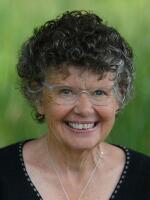Songwriter Joni Mitchell captured the melancholy of autumn in her song “Urge for Going.”
She sang:
“I get the urge for going
When the meadow grass is turning brown
And summertime is falling down
And winter is closing in.”
The song tells of the end of a summer love — her man grew restless — and she used the perfect image: “geese in chevron flight.” She couldn’t have chosen a better metaphor.
That autumn uneasiness in geese is so universal, the Germans even have a word for it — "Zugunruhe" — which means “migratory restlessness.”
This year, fall has come late. It’s been warm, and food is still plentiful. Some geese, especially in towns and parks, don’t even bother to leave for the winter anymore.
And yet, the Canada geese are uneasy.
They gather in flocks, and almost every afternoon, you can see them circling the skies — calling loudly, stretching their wings, exercising their flight muscles.
They aren’t leaving yet, but you can tell they’re getting ready.
They remind me of runners training for a marathon — restless, focused, preparing for the strenuous journey ahead.
Even caged birds, those in zoos and aviaries, grow restless when the seasons turn. That’s why scientists believe migration isn’t just about weather or food, but also about an internal clock and the changing hours of daylight.
Mitchell sums up her emotions with a wistful line:
“I'd like to call back summertime,
And have her stay for just another month or so,
But she’s got the urge for going,
So I guess she’ll have to go.”
And one of these days, so will the geese.








